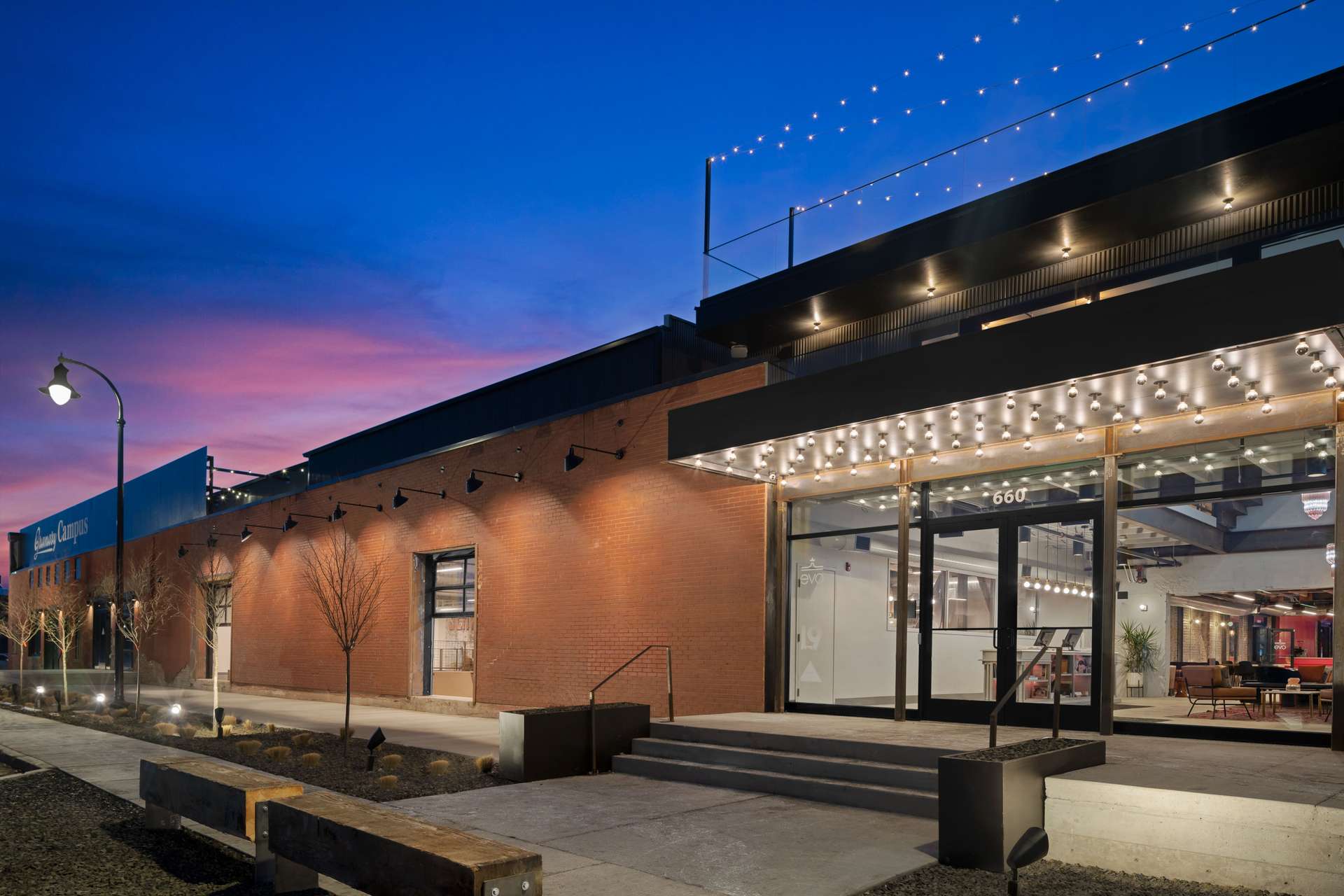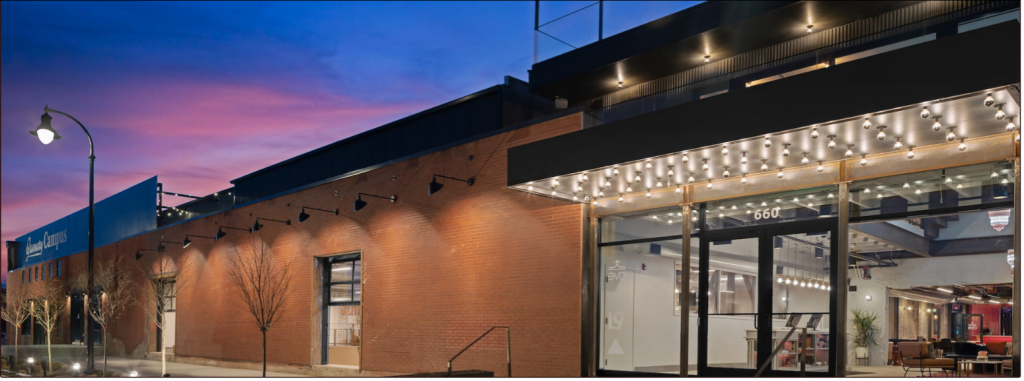This Online Open House has been closed, the proposal has been adopted by the City Council on July 2, 2024. For additional information regarding the decision please visit the City Council’s Minutes and Records page, or contact the Staff Planner listed under the “Public Comments and Questions” section of this page. Thank you!

Incentives for Adaptive Reuse & Preservation of Buildings
Petition Number: PLNPCM2023-00155
Application Type: Zoning Text Amendment
Zoning Districts: Citywide
Mayor Erin Mendenhall has initiated a petition for a text amendment that would make changes to the zoning ordinance to support adaptive reuse and preservation of existing buildings. The goal of this proposed text amendment is to remove zoning barriers that prevent the reuse of buildings and look at possible zoning incentives to encourage a building to be reused rather than demolished.
Adaptive reuse is both a sustainable practice and a vital planning tool that aids in meeting the City’s various goals. The adaptive reuse of an existing structure retains a building’s original form while bypassing wasteful demolition. This process keeps substantial amounts of materials out of landfills and reduces energy consumption. Additionally, preserving these buildings which are often historic or contain elements of unique architectural detailing, helps maintain neighborhood character and breathes new life into buildings that contribute to neighborhood fabric. Adaptive reuse allows existing buildings to serve our community for generations to come while continuing to tell the story of those who came before us.
The proposed text amendment would create a new section in the Zoning Ordinance, 21A.52.060 Incentives for Preservation of Existing Buildings. The preservation of existing buildings incentives is proposed to have two sections. The first section, Adaptive Reuse for Additional Uses in Eligible Buildings, allows for additional uses in Landmark Sites, buildings individually listed on the National Register of Historic Places, schools, hospitals, and places of worship. The second section, Incentives for Development that Preserves an Existing Building, offers zoning incentives for existing buildings, such as additional height, reduced parking, and administrative approval process for a development that retains an existing building.
Planning Commission Staff Report with Updated Draft Ordinance Language – 2/28/2024
Historic Landmark Commission Briefing Memo with Draft Ordinance Language – 8/3/2023
Draft Ordinance – 9/22/2023
Planning Commission Briefing Memo with Draft Ordinance Language – 9/27/2023
Historic Landmark Commission Staff Report with Draft Ordinance Language – November 2, 2023
Adopted Text Amendment – July 2, 2024

Image Description: The evo Campus Salt Lake is a collection of warehouse buildings (the oldest dates to 1891) that, at one time or another, housed the Salt Lake Rapid Transit Complex (trolley car repair shops), a farm supply company, and a wool and pelt company. Recognizing the potential offered by these warehouse buildings, they’ve been adapted to new uses and the evo Campus now includes the All Together Skatepark, a climbing gym, a hotel, and a rooftop bar with views of the surrounding Granary District.
Building Preservation Incentives
Adaptive Reuse for Additional Uses in Eligible Buildings “A Incentives” (21A.52.060.A)
Purpose: To allow additional land uses in buildings that generally contribute to the character of the city so they can be redeveloped for economically viable uses. These buildings may be underutilized or have outlived their original use due to economic conditions, size of the building, a substantial degree of deterioration of the property, or other factors. Eligible buildings may hold historical or cultural significance or contribute to the existing neighborhood fabric through their architectural features, size, or previous use.
Currently, the zoning ordinance allows for nonresidential use of a Landmark Site in a residential zoning district (even if the use is not allowed in the district), subject to meeting standards related to preserving the buildings character, neighborhood compatibility, and mitigating negative impacts. This process is allowed through either a permitted or conditional use as indicated in the land use tables. The proposed ordinance expands on this current process with the following changes:
- Expand Eligibility: The process described above is currently limited to Landmark Sites. In addition to Landmark Sites, the proposed changes expand eligibility to individually listed National Register properties as well as former school, church, and hospital buildings that may have outlived their original use but are difficult to reuse without a rezone process due to the zoning districts their former uses are generally located in, such as single family residential and institutional zoning districts. Additionally, buildings that the Planning Director has deemed as significant based on the structure’s association with events that have contributed to broad patterns of history, association with lives of persons important in the city’s past, or displays distinctive characteristics of a type, period, or method of construction may be eligible.
- Remove Building Square Footage Requirement: The current ordinance has a building square footage minimum of 7000 SF minimum to qualify for this process, which is limiting. As part of the proposed text amendment, there would be no minimum building square footage to qualify.
- Expand Uses: The current process is limited to allow for nonresidential uses in residential zones. The proposed language adds an allowance forresidential uses as well, which would enable an eligible building to be converted to a multi-family residential use. If an eligible building is located in a residential district and is currently used for residential purposes, it cannot be converted to nonresidential use. Additionally, this would also allow for residential uses in eligible buildings in the public lands and institutional zones where the only residential use that is currently allowed is living quarters for a caretaker or security guard.
Preservation of a Principal Building “B Incentives” (21A.52.060.B)
Purpose: The incentives proposed in this section are intended to encourage the preservation of buildings, supporting city goals related to sustainability, neighborhoods, economy, and housing. The provisions are designed to support developments that include preserving an eligible building by allowing flexibility with certain zoning regulations while still maintaining the unique urban fabric and character of neighborhoods.
- Zoning Incentives: The proposal includes offering zoning incentives for new development projects that include preserving an existing structure that is at least 50 years old. Under 21A.52.060.B., proposed development incentives include no minimum lot areas in all zones except single family residential, parking reductions, and additional building height in certain zones through administrative Design Review. The creation ofadministrative Planned Development process is being proposed as part of this text amendment. This process would allow for modifications to setback requirements due to lot configuration, open space and landscaping requirements, encroachments like balconies and awnings into required yard areas and parking location. The overall project, which may include multiple abutting properties, could be eligible for these incentives, rather than just the existing building. In this scenario, any use still has to be listed as permitted or conditional in the zoning district the project is located in.
Next Steps
- Notice to Recognized Organizations: Notice of the application and the draft ordinance will be sent to all registered Salt Lake City Recognized Organizations who will begiven a 45-day period to respond before a public hearing with the Historic Landmark Commission and Planning Commission can be scheduled. During and following this comment period, the Planning Division will consider all public comments received and make appropriate modifications to the proposed ordinance language. This open house page will continue to be updated with any new information related to the proposal.
- Briefing with Commissions: Staff has held a briefing with the Historic Landmarks Commission on August 3, 2023. The most recent draft of the Adaptive Reuse Text Amendment is located in the Historic Landmark Commission briefing. Staff will hold a briefing with the Planning Commission to discuss the proposed amendments and receive input.
- Public Hearings: Public hearings will be held with both the Historic Landmark Commission and the Planning Commission where there will be additional opportunities to make public comments. The Historic Landmark Commission and Planning Commission will make a recommendation on the proposed changes and their recommendations will be forwarded to the City Council. *We are here*
- Historic Landmark Commission: November 2, 2023 – The HLC forwarded a positive recommendation
- Planning Commission: February 28, 2024 – The planning commission forwarded a positive recommendation
- City Council: The City Council will hold a public hearing for additional public comments and will make a final decision on the matter.
What is the role of the Planning Staff in this process?
Planning Staff will respond to public comments, answers questions, will make appropriate modifications to the draft ordinance, and will brief and make recommendations to the Historic Landmark Commission, Planning Commission, and City Council.
Public Comments and Questions
We want to hear from you! To submit a comment or question please contact the staff planner via email or leave a voicemail.
Amy Thompson // amy.thompson@slcgov.com // 801-535-7281